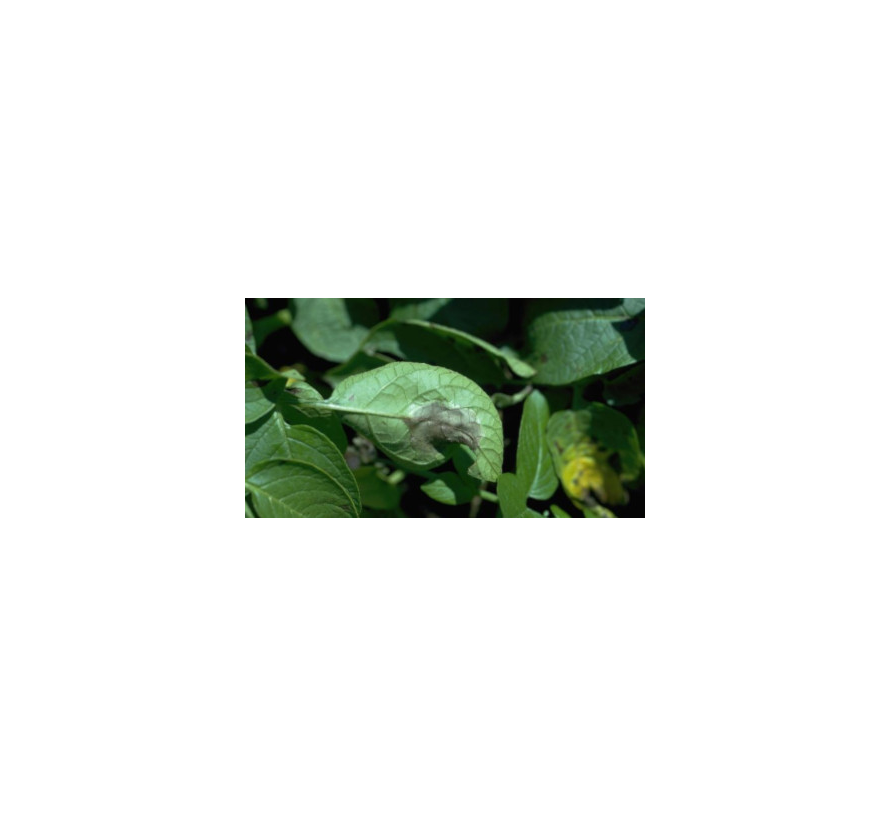What is phytophthora and how can you fight it
You have wilting plants and you don't know why. Although you water them, they don’t get better. You would even say it is making it worse.
Your plants are withering and you don't really know why.
You water them regularly, you give them all the nutrients they need, but still their condition keeps getting worse.
Has it ever happened to you?
Then it is possible that the culprit is the fungus phytophthora infestans (or phytophthora). A very dangerous organism that can pose a risk to the plants in your garden.
Hence this post.
Here we will explain:
- What is the phytophthora fungus and what are the symptoms.
- Which plants are more sensitive.
- How to combat this fungus and prevent its appearance.
Let's go there.
What is phytophthora and how does it invade your plants?
Phytophthora is a fungus that lives in water.
It infects plants through the roots and up the stem until it kills it. The fungus can remain inactive for months or years until the conditions are favourable for its propagation.
Once it has spread throughout the host plant, it is very difficult to eliminate. Also, the fungus will stay in the soil and can invade other plants you plant in it.
The good thing is that, if you catch it in time, it is possible to eliminate it.
Which are its symptoms
In the early stages of the infection, it is easy to confuse the symptoms of phytophthora with a lack of irrigation.
However, there are some signs that will alert you to the presence of this dangerous fungus:
- Affected plants do not improve with watering: in the species affected by this disease, the leaves turn brown, yellow or red and end up withering, as if they lacked watering. However, no matter how much you water them (or despite the fact that you are already giving them enough water), their condition does not improve.
- Brown spots appear on stems and roots: with the attack of the fungus, rot marks appear on the roots of the plant and at the base of the stem. This can give us a clue that our plant is being infected.
- It only affects plants in poorly drained soil: The phytophthora develops better in moist or waterlogged soils. If you notice that the only plants with symptoms are those in soils with poor drainage or waterlogging, it is possible that this fungus is responsible.
- The fruits rot: When phytophthora affects fruit trees, a very obvious sign is that brown spots begin to appear on the fruits and they end up rotting for no apparent reason.
- Trees suffer gummy: gummosis is a process by which trees exude a sticky, amber-coloured substance from their bark, as if they were "expelling" their resin.
We follow.
Which plants are more sensitive to phytophthora?
Almost any plant can be attacked by phytophthora. However, these varieties are especially sensitive:
- Conifers: Phytophthora is also known as "dry conifers" because it usually affects these types of trees. Once a specimen is infected, itThe dryness extends from the base of the trunk towards the crown. The branches are turning brown, as if the tree were drying up.
- Citrus and fruit trees: the lemon tree, the avocado tree, the peach tree... all these species are a regular target of thefitoftora. We will notice it by the appearance of brown spots on stems, leaves and branches, and by the rotting of the fruits. It is also common for gummosis to occur.
- Grass: recently seeded grass with poor drainage is the most susceptible to phytophthora fungus.
Once the fungus has spread through the plant, it is very difficult to completely eradicate it. Therefore, the best weapon against this fungus is prevention.
How to prevent phytophthora from attacking your plants?
These are the guidelines that you must follow to prevent your plants from being affected by the fungus:
1. Watch out for soil drainage
Like many fungi, phytophthora thrives in moist soil.
As we told you, this fungus enters the plant in the water that it absorbs through the roots, and from there it spreads until it completely infects it.
And if it is in soils with a lot of waterlogging, it is easier for it to reproduce.
To avoid its appearance, we must always make sure that the soil has good drainage.
2. Water moderately
As a consequence of the above.
Each plant has different water needs, and it is important that you know them so as not to drown them.
An excess of water can favor the appearance of fungi such as phytophthora. And if the plant has already been infected, you could weaken it and make the fungus spread faster.
3. (If planting fruit trees) Use disease-resistant rootstocks
Some varieties of fruit trees have a natural resistance to phytophthora. Use them as a rootstock of another weaker variety to protect it
Some species of fruit trees that you can use are:
- Trifoliate orange and hybrid varieties of this tree
- Hybrids of grapefruit and mandarin
- sour orange
4. Mixtures of fungicides
Applying a mixture of fungicides can help us prevent the appearance of phytophthora in trees and young species. In addition, it can also eliminate the fungus in the early stages of the disease.
5. Remove infected specimens
Once the disease has spread too far, it is almost impossible to eliminate it.
If you have a very damaged specimen, it is best to remove it so that it does not infect others nearby.
Ready to keep phytophthora at bay and not infect your plants?
We hope these tips have been useful to you.
Remember that if you have any doubts, all you have to do is contact us.
we will be happy to help you keep your plants healthy and happy.

 English
English Spanish
Spanish
Comments
Leave your comment